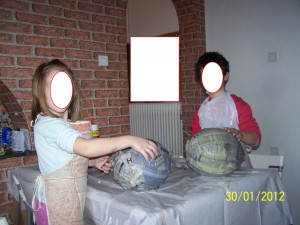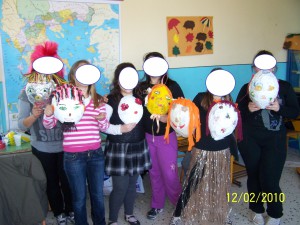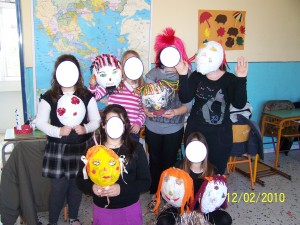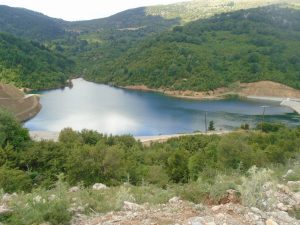
This is a blog for English teachers around the world, yet there is something I have been meaning to talk to the world about for so long … Something non-related to teaching, learning, classroom decorating or managing, although I am sure this is what you (and I) have all been busy with as we approach the beginning of the school year! Please, allow me this time to share with you my enthusiasm and excitement about a place so few people know about, have realized its significance and have ever visited and appreciated it so far! Ladies and gentlemen, you are kindly requested to sit comfortably, with eyes wide open, and travel with me to Mavromati Dam, an amazing place situated on Othrys Mountain, in Thessaly, Greece.

I know … If you do not live or are not from Magnesia, Greece, you cannot find it on any map (I sure cannot!), but you can get an idea of its location by clicking here! It seems to be in the middle of nowhere and, if you have tried the previous link, there is unfortunately not much to see from the satellite pictures on Google Maps! Visiting this place though, will give you a whole new perspective of this mountainous area in the centre, the heart of Greece!

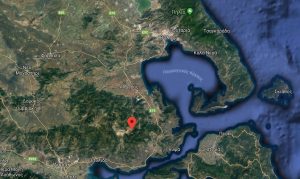

Mavromati Dam is a 48m high earth-fill dam that has been created to meet the water supply needs of the municipal units of Pteleos and Sourpi of the Municipality of Almyros, Magnesia, Greece. It is an EU funded project that cost a bit more than15 million euros and it is meant to ensure and provide quality water to about 9 settlements in the area! This means that, for at least the next 40 years, 8.000 residents and more than 10.000 tourists that visit the area all around the year will benefit from quality water supply.


Aside from the impressive technical characteristics and the background of its construction, this blog post here is mainly meant to communicate to the world the unparalleled natural beauty that wonderfully surprises the visitors, the calmness and peacefulness that governs their mind and soul and the realization that inevitably strikes them that some human interventions are meant to bring good to the world and have been made in perfect harmony with their surroundings! Visiting this place many times with family and friends, it is hard to resist silent viewing of the attractive landscape, inhaling the flora of the area and paying attention to the bizarre-for-the-urban-eye fauna! The aforementioned reactions are unavoidable for any visitor, however, on a more personal viewpoint, this destination is ideal for picnic and hiking fans of any age! My family and I love walking around the dam, spotting weird plants and bugs that fly around us and enjoying our meals among the trees, right next to a fount of cold drinking water!

In parallel with these religions which support that the road to heaven is difficult, the actual road to this natural heaven is unfortunately dusty, rocky and a bit scary after heavy rains! This, of course, is not uncommon in many magnificent Greek destinations and it is not necessarily a disadvantage, as children (if they are anything like mine) may find some unreasonable-for-the-adult-mind pleasure just by watching the clouds of dust behind their car, by trying to spot their friends’ vehicles in the ‘fog’ and by feeling the inevitable shaking of their bodies and heads throughout the ascent! Children, of course, have no idea that their mother who is also the car driver and not a local, may have no idea where she is going (as there are no road signs to help and lead her to Mavromati Dam) and may be unable to use her mobile phone as it is out of range! However, being adventurous by nature, this has never worked as a deterrent in deciding to visit this place and, being optimists on principle, this is probably something that will soon be taken care of by the local authorities and associations. Thus, once easy and safe access is ensured, that is maybe when Mavromati Dam will take the place it deserves on all kinds of digital and paper maps, and that is maybe when we, teachers, will organize educational school trips there and help our learners realize our connection with nature and develop their respect towards the surrounding environment, their actual home.

All in all, words, pictures and videos are unable to capture the beauty, the smells and the sense of the breeze on your face while standing on the dam, but they can definitely work as an attractive display of an EU funded project that not only meets the water supply needs of a small central Greek area, but also serves as a perfect occasion to come closer to nature and enjoy it in many ways. Mavromati Dam has undoubtedly not enjoyed the national or even local promotion it deserves as a hiking, climbing, or even family trip destination mainly for practical reasons that are hopefully soon to be taken care of. Till then, it is up to us, plain local citizens, to love it, respect it, suggest and promote it, not only because it is a worth-visiting attraction of our area, but also because it seems selfish to keep this hidden paradise on earth a secret from the world!











